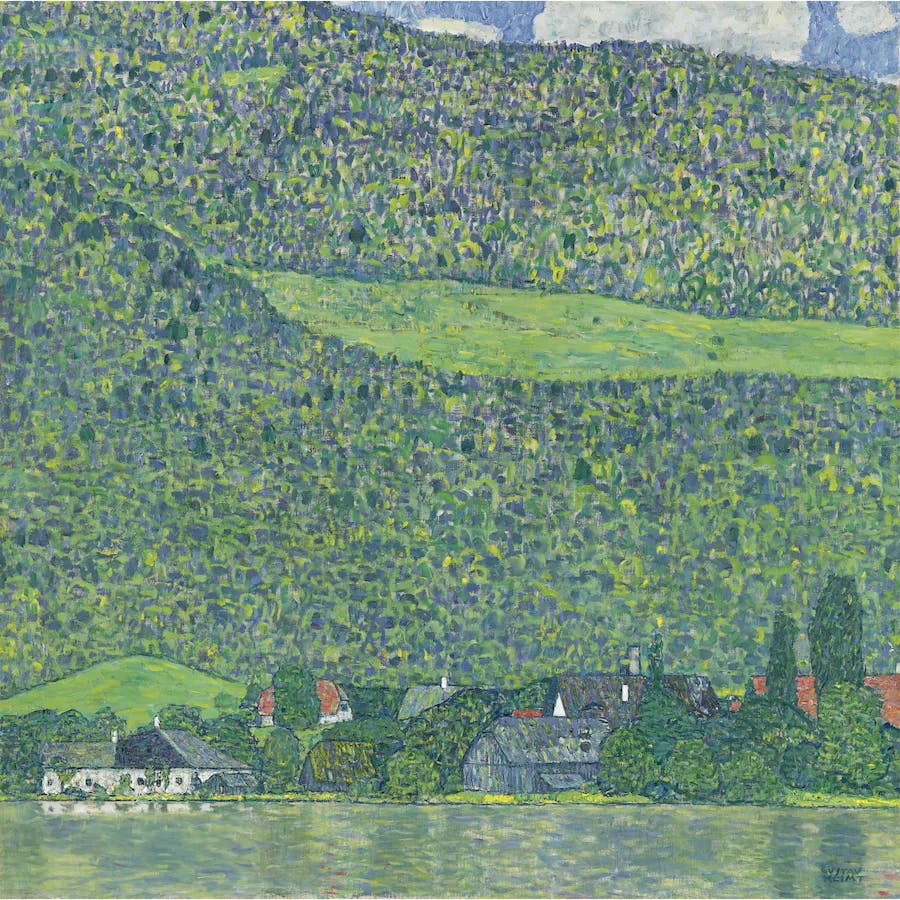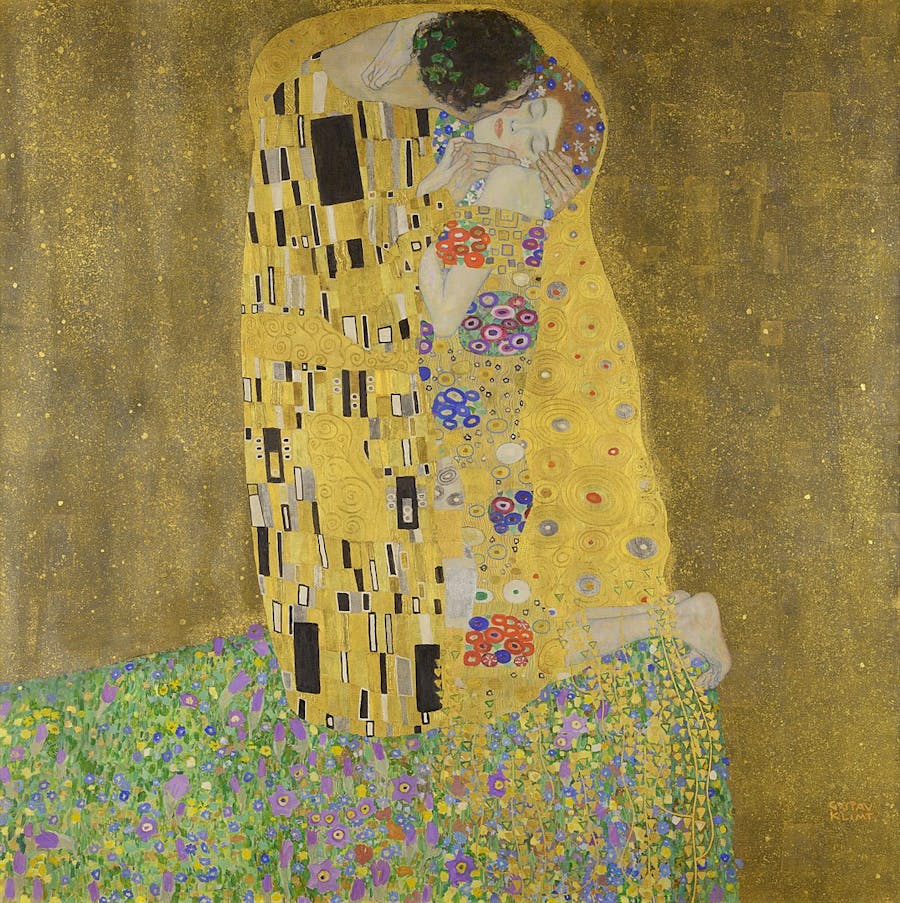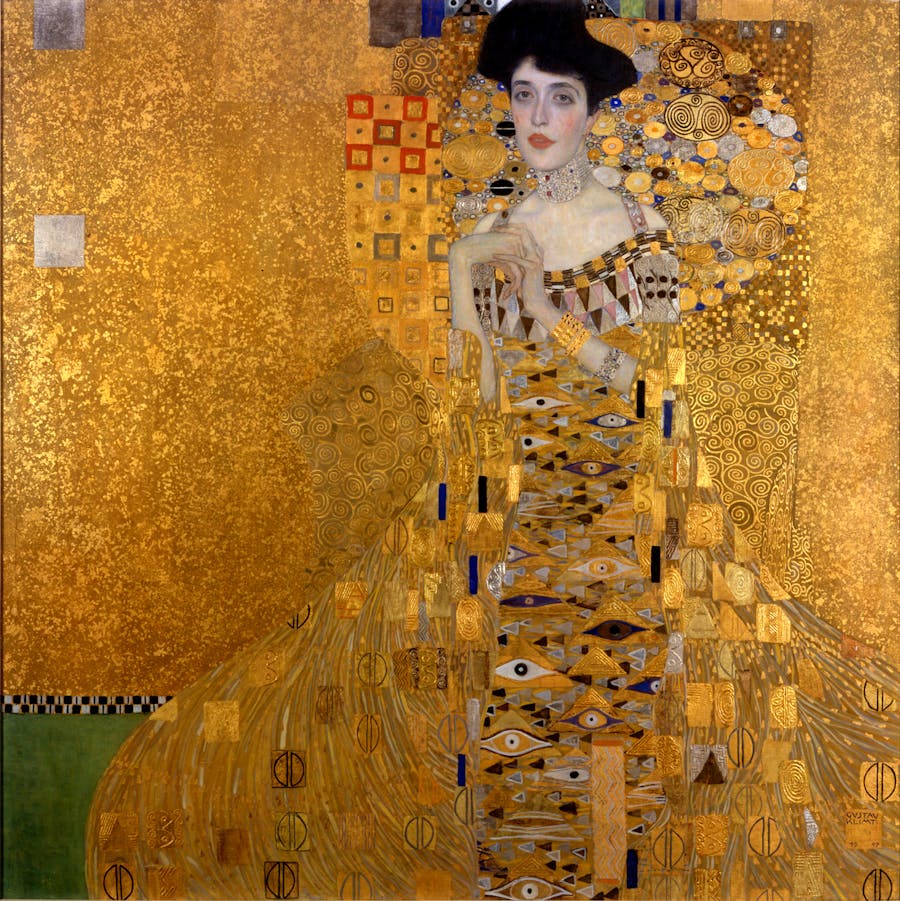Gustav Klimt: Artist of Emotion and Eroticism
Controversial for his time and yet undoubtedly a recognized genius, Gustav Klimt is today considered one of the most significant artists of the 20th century.
Born in 1862 to a gold engraver in Baumgarten near Vienna, Gustav Klimt displayed artistic talent from an early age. He studied architectural painting in the conventional style at the University of Applied Arts Vienna alongside his younger brother Ernst, and his early works were praised by critics and contemporaries. However, the successive deaths of his father and brother in 1892 devastated him, influencing his adoption of an increasingly personalized style. It was during this decade that works in his signature original style began to emerge, including Ancient Greece and Egypt (1891), Pallas Athene (1898) and Nuda Veritas (1899).
In 1897, Klimt co-founded and became president for The Vienna Secession, an artistic movement that sought to support non-traditional contemporary artists, rejecting the conservatism of the Vienna Künstlerhaus. Its advent went on to characterize the rise of modernism in Austria. Klimt’s work became increasingly sensual, utilizing the flushed tones and curvatures of the female form as an allegorical symbol for traditional myths and figures. Such radical themes of eroticism were considered controversial for the time, many deeming his paintings to be pornographic. As a response to these accusations, the artist painted Goldfish in 1902, originally titled To My Critics. The painting features a woman with her rear facing the audience, looking behind her shoulder with a leering expression as if to taunt the viewer.
Related: Icons: The Sacred Art
Aside from his figure paintings, for which he is most known today, Klimt also demonstrated an interest in painting landscapes. He was often able to travel with friends to Attersee, where much of these works were created. His landscape pieces feature the same innovation and mastery of pattern and form as his figural works, demonstrating his characteristically unique approach to conveying an image. The scenes are depicted on a singular, flattened plane, prompting many to believe that he used a telescope to view the landscapes as he painted them.
Related: A $45 Million Klimt Landscape Makes Its Auction Debut

Behind the scenes of his artwork, Gustav Klimt was a man of eccentricity. He could often be seen wearing a full-length, almost costume-like smock, and his studio was filled with cats, which he adored only nearly as much as he did women. The artist was notorious for womanizing, rumored to have had sexual relations with all of his female sitters and fathering at least 14 children during his lifetime. He was never married, however, he did enjoy a decades-long close relationship with Emilie Flöge. This passion for the female as a sexual being is perhaps the most prevalent and commonly occurring theme of his artwork. The artist himself stated "I have never painted a self-portrait. I am less interested in myself as a subject for a painting than I am in other people, above all women...”
Related: Emilie Flöge: The Visionary Fashion Designer Who Inspired Gustav Klimt

As the earliest years of the 20th century progressed, Klimt entered into what would be known as his ‘golden phase’. It was during this era of his work that some of the artist’s most iconic and critically revered pieces emerged, such as Portrait of Adele Bloch-Bauer (1907)(later termed ‘Woman in Gold’ by the Nazis due to the sitter’s Jewish surname), and The Kiss (1908). Excessively utilizing the medium of gold leaf, as the name of the phase would suggest, these works were also greatly inspired by Byzantine mosaics that Klimt would have observed during his visits to Venice and Ravenna. His art was widely praised during this time, earning him great financial and critical success in his career.
Related: Were Gustav Klimt and Adele Bloch-Bauer Lovers?

At the end of Gustav Klimt's life, his work and career saw great achievement. His painting Death and Life won first prize at the World Exhibition in Rome. In February 1918, Klimt died due to stroke and pneumonia complications at the age of only 55, leaving many works unfinished. During World War II, a number of his masterpieces were destroyed in fires by German forces, and some still remain unaccounted for.
Want articles like this straight to your inbox? Subscribe to our free newsletter!

In 2006, Portrait of Adele Bloch-Bauer, along with several other of his works, was returned to its rightful heir at the order of a US Federal District Court ruling, after being stolen by Nazis in 1941 and displayed at the Österreichische Galerie Belvedere in Austria. The same year, the painting was sold to Ronald S. Lauder of the Estée Lauder estate for a record price at the time of#1 million.
Another portrait set a new auction record for Gustav Klimt at the end of June 2023: Lady with Fan, Klimt's last portrait, sold at auction at Sotheby's in London for $108.4 million
Find more articles in Barnebys Magazine
Article by Jenna Soule


